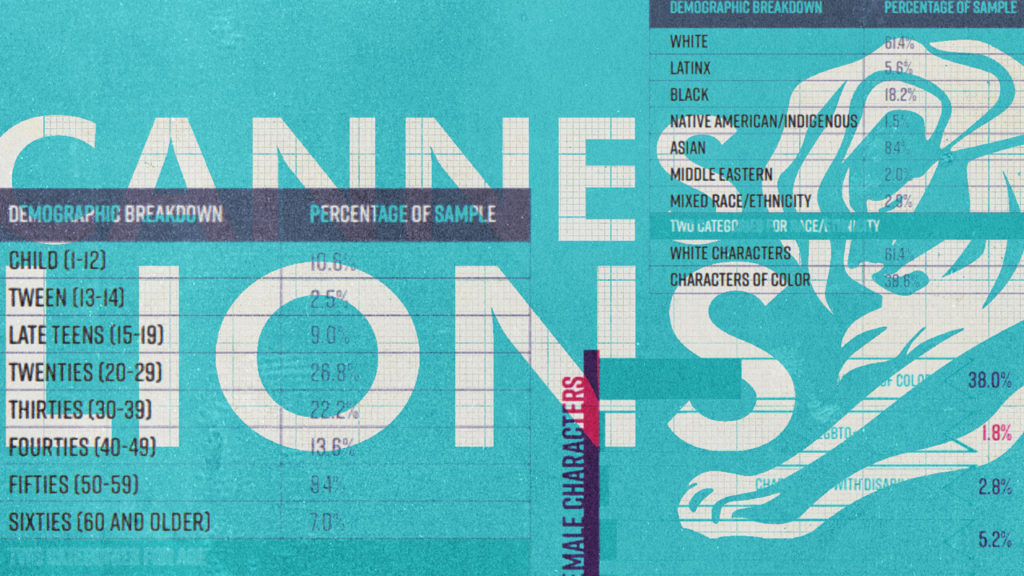In 2019, representation of black and brown people in ads reached 38 percent, down from 43.1 percent in 2018, according to a study on inclusion and bias in advertising from Cannes Lions and The Geena Davis Institute on Gender in Media. The report analyzed representations of gender, race/ethnicity, LGBTQ+, disability, age and body size in Cannes Lions ads from 2006 to 2019.
Despite the 5.1 percent decline, racially diverse characters garnered 46.4 percent of screen time in 2019 ads.
Since 2006, the first time the organizations analyzed race in ads, the number of black and brown people shown in ads grew by 12.1 percent, from 25.9 percent in 2006 to 38 percent in 2019. On the other hand, white characters saw a decrease, from 74.1 percent in 2006 to 62 percent in 2019.
Still, the industry has a long way to go in eliminating racial bias in ads as white characters are more likely to be shown working than those of color (20.5 percent compared with 17.2 percent). White people are also more likely to be portrayed as smart than black and brown people (10.1 percent vs. 7.6 percent).
The report also found racial differences in depictions of work, eating/drinking, exercising and in a classroom, as well as a discrepancy in representations of intelligence. So while advertisers have made creative more racially diverse, they’ve also continued to reinforce negative stereotypes.
Representation of women in ads has remained mostly stagnant. In 2019, male characters outnumbered female characters two to one (61.4 percent vs. 38.6 percent). What’s worse, male actors have twice the screen time and speaking time as female actors (69.3 percent vs. 30.6 percent).
Gender equality in ads has fluctuated over the past decade; representation of women peaked at 40.2 percent in 2014 (vs. 59.8 percent for men). Since then, the percentage of males shown in ads has also fluctuated, but has never dropped below 59 percent.
This gender imbalance can also be seen in the portrayals of work, leadership and personal attributes in ads. Nearly twice as many male characters are shown working as female characters (22.2 percent vs. 13.3 percent). Male characters are also more likely to be depicted as leaders than female characters (16.6 percent compared with 10.1 percent). Additionally, more male characters are shown as funny than female characters (22.1 percent vs. 15.4 percent). Female characters are nearly twice as likely to be shown as partially nude, and four times more likely to be shown in revealing clothing than their male counterparts (10.8 percent compared with 2.2 percent).
For LGBTQ+ characters, the figures are worse: just 1.8 percent of characters with a discernible sexual orientation in ads are LGBTQ+, compared to 10 percent of people globally.
Advertisers also represent LGBTQ+ characters differently than non-LGBTQ+ ones. For example, non-LGBTQ+ characters are more likely to be shown working than LGBTQ+ characters (18.9 percent vs. 6.9 percent), and as smart (8.9 percent vs. 6.8 percent).
The groups most underrepresented in ads include people with disabilities, those over the age of 60 and characters with large body types. In 2019, people with disabilities accounted for just 2.2 percent of characters in ads; people over 60, seven percent; and those with large body types, 7.2 percent.
While characters ages 60 and over are nearly twice as likely to be shown as leaders than younger people, characters with large body types are more likely to be shown as stupid than other characters (9.1 percent vs. 1.8 percent).
Findings are based on an analysis of 251 English-speaking or English-subtitled Cannes Lions Film and Film Craft ads from 2019, from the US, the UK, Canada, Ireland, New Zealand and Australia.

